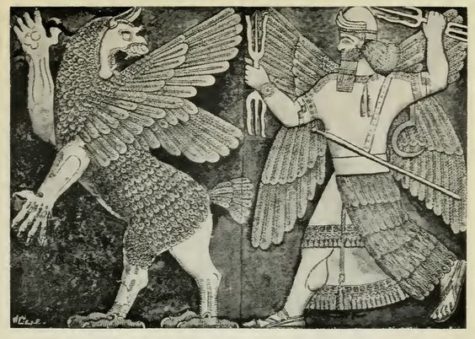Spring
Flora is the Roman Goddess of flowering plants, especially those that bear fruit. Spring, of course, is Her season, and She has elements of a Love-Goddess, with its attendant attributes of fertility, sex, and blossoming. She is quite ancient; the Sabines are said to have named a month for Her (which corresponds to our and the Roman April), and She was known among the Samnites as well as the Oscans, where She was called Flusia.
She was originally the Goddess specifically of the flowering crops, such as the grain or fruit-trees, and Her function was to make the grain, vegetables and trees bloom so that autumn’s harvest would be good. She was invoked to avert rust, a nasty fungal disease of plants that causes orange growths the exact color of rusting iron, and which was (is) an especial problem affecting wheat.
Hers is the beginning of the process that finds its completion with Pomona, the Goddess of Fruit and the Harvest; and like Pomona, Flora had Her own flamen, one of a small number of priests each in service to a specific Deity. The flamens were said to have been instituted by Numa, the legendary second King of Rome who succeeded Romulus; and whether Numa really existed or not, the flamens were undoubtedly of ancient origin, as were the Deities they served.
In later times Flora became the Goddess of all flowering plants, including the ornamental varieties. Her name is related to Latin floris, meaning naturally enough “a flower”, with the additional meaning of “[something] in its prime”; other related words have meanings like “prospering”, “flourishing”, “abounding”, and “fresh or blooming”.
In one story, Flora was said to have provided Juno with a magic flower that would allow Her to conceive with no help from a man; from this virgin-birth Mars was born. A late tale calls Flora a courtesan and gives Her a story similar to Acca Larentia: Flora was said to have made a fortune as a courtesan, which She bequeathed to Rome upon Her death, and for which She was honored with the festival of the Floralia. As Flora was originally a Sabine Goddess, and as the Sabines were a neighboring tribe whom the Romans conquered and assimilated into Rome, perhaps this is an acknowledgement of the land so acquired, put into legendary terms.
Flora had two temples in Rome, one near the Circus Maximus, the great “stadium” of Rome where chariot races were held, and another on the slopes of the Quirinal Hill. The temple on the Quirinal was most likely built on the site of an earlier altar to Her said to have been dedicated by Titus Tatius, King of the Sabines, who ruled alongside Romulus for a time in the very early (hence legendary) days of Rome. Her other temple was built quite near to the Circus Maximus, though its exact site has not been found, and was associated with a neighboring temple dedicated to the triad of Ceres (the Grain Goddess) and Liber and Libera (God and Goddess of the Vine). These Deities and Flora were all concerned with the fertility and health of the crops.
Flora’s temple by the Circus was dedicated on the 28th of April in 241 (or 248) BCE in response to a great drought at the command of the Sybilline books, and this day became the starting date of Her great festival, the Floralia. In Imperial times (1st century CE) this temple was rededicated (I assume after some restorations were made) on the 13th of August, and this date was given to a second festival of Flora, coinciding with the ripening of the grain, whose flowers She had set forth.
The Floralia of April was originally a moveable feast to coincide with the blossoming of the plants, later becoming fixed with the dedication of Her temple on the 28th (or 27th, before the calendar was reformed–I mention this because holidays were almost always held on odd-numbered days as it was considered unlucky to start a festival on an even-numbered day), though ludi or “games”–horse-races or athletic contests–were not held every year.
By the Empire the festival had grown (or should I say, blossomed) to seven days, and included chariot-races and theatrical performances, some of which were notoriously bawdy. It was given over to merriment and celebrations of an amorous nature, much like that northern flower-and-sex festival Beltaine whose date neatly coincides. Prostitutes considered it their own special time, and the Floralia gained a reputation as being more licentious and abandoned than the Saturnalia of December, whose name is legendary even now.
At the chariot-races and circus games of the Floralia it was traditional to let goats and hares loose, and lupines, bean-flowers and vetch (all of which have similarly-shaped blossoms and are a sort of showier version of wheat in bloom) were scattered, symbolic of fertility. Brightly colored clothes were a must, as were wreaths of flowers, especially roses; and the celebrations drew great crowds. Of the two nationalized chariot-teams who shared a deep rivalry, the Greens and the Blues, the Greens (of course) were Hers, and She had been invoked at chariot-races from ancient times.
The last day of the festival, May 3rd, was called Florae; it may be a special name for the closing day of the Floralia, or it may refer to a seperate ceremony conducted in Her temple on the Quirinal.
Flora was depicted by the Romans wearing light spring clothing, holding small bouquets of flowers, sometimes crowned with blossoms. Honey, made from flowers, is one of Her gifts, and Her name is said to be one of the secret (holy) names of Rome. She is sometimes called the handmaiden of Ceres. Ovid identifies Her with the Greek flower-nymph Chloris, whose name means “yellow or pale green”, the color of Spring. The word flora is still used as a general name for the plants of a region.
Alternate names/epithets: Flora Rustica, “Flora the Countrywoman” or “Flora of the Countryside”, and Flora Mater, or “Flora the Mother”, in respect to Her ancient origins. Among the Oscans She was known as Flusia.
Source: Thaliatook.com
The Easter Bunny has its origin in the tradition of honoring of rabbits during spring as an animal sacred to the goddess Eostre. According to lore, she is the goddess of spring who presides over the birth of babies, both animal and human, and of the pollination, flowering and ripening of fruits in the plant kingdom.
The modern belief that eggs are delivered by a rabbit, comes from a popular Pagan legend about Eostre. According to the legend, Eostre was walking one fine spring day and came upon a beautiful little bird. The poor bird’s wing was badly injured and Eostre, feeling great compassion for the little creature, wanted to heal it. But the little bird’s wing was so badly damaged that Eostre knew it would never be able to fly again even after she healed it.
Eostre decided to help the bird by healing it in a way that would give it mobility and a little something more; she turned it into a rabbit. During the transformation, the rabbit retained the ability to lay eggs.
The rabbit was so grateful to Eostre for saving her life that she laid a sacred egg in Eostre’s honor. The rabbit decorated the egg and then presented it to the Goddess. She was so pleased by the rabbit’s gift that she wished all humankind to share in her joy.
In honoring her wishes, the rabbit went all over the world distributing beautifully decorated little gifts of life and continues to do so even today.
For modern Pagans, Ostara is a sabbat of light, of humor, of celebrating and growing. It’s considered to be a time for balancing the light and dark, for starting new paths. These are concepts that all people, even those with different religious beliefs, can appreciate.
Source: When God Was A Woman
When Babylon became the capital of Mesopotamia, Marduk, the patron deity of Babylon was elevated to the level of supreme god. Acknowledged as the creator of the universe and of humankind, the god of light and life, and the ruler of destinies, he rose to such eminence that he claimed 50 titles. His name literally means “bull calf of the sun”.
In order to explain how Marduk seized power, the Enûma Elish was written, which tells the story of Marduk’s birth, heroic deeds and becoming the ruler of the gods. Also included in this document are the fifty names of Marduk.
According to this ancient epic poem of creation, Marduk defeated Tiamat and Kingu, the dragons of chaos, and thereby gained supreme power.
The story is as follows:
A civil war between the gods was growing to a climactic battle. The call went out to find one god who could defeat the opposing Gods and the Dragons of Chaos rising against them. Marduk, a very young god, answered the call and was promised the position of head god if he could get the job done.
To prepare for battle, he makes a bow, fletches arrows, grabs a mace, throws lightning before him, fills his body with flame, makes a net to encircle Tiamat (the dragon) within it, gathers the four winds so that no part of her could escape, creates seven nasty new winds such as the whirlwind and tornado, and raises up his mightiest weapon, the rain-flood. Then he sets out for battle, mounting his storm-chariot drawn by four horses with poison in their mouths. In his lips he holds a spell and in one hand he grasps a herb to counter poison.
First, he challenges the leader of the Anunnaki gods, the dragon of the primordial sea Tiamat, to single combat and defeats her by trapping her with his net, blowing her up with his winds, and piercing her belly with an arrow.
Then, he proceeds to defeat Kingu, the god in charge of the army and who also wore the Tablets of Destiny on his breast. Marduk “wrested from him the Tablets of Destiny, wrongfully his” and assumed his new position. Under his reign humans were created to bear the burdens of life so the gods could be at leisure.
Marduk was depicted as a human, often with his symbol the snake-dragon which he had taken over from the god Tishpak. Another symbol that stood for Marduk was the spade.
Another take on the story:
In ancient Mesopotamia, the final days of the year were a time of decay and death, as the very year itself withered and died, and thoughts turned to the departed. The terrible chaos goddess Tiamat threatened to destroy the world and all its inhabitants; she was a sea-monster, born of the marriage of fresh and salt water, who gave birth to a generation of young gods, on whom she later declared war. From these young gods, one rose to lead the fight against Tiamat and defeated her, thus saving the world.
Marduk’s Names:
He was Marduk, a young Sun god, whose name comes through amar-ud – ‘Youth of the Sun’, and maru Duku – ‘Child of the Holy chamber’, who was also called Bêl which means ‘Lord’ and may be known to Bible readers as Ba’al (when Bêl is mentioned, it always refers to Marduk). He rose to such eminence that he claimed 50 titles. His name literally means “bull calf of the sun”.
The Fifty Names of Marduk as recounted in the Enûma Elish, and can be found here: The Fifty Names of Marduk.
Attributes and Powers:
Marduk fought against chaos and was killed, spending time in the underworld before being resurrected, returning to life to defeat the forces of evil and so becoming the King of the gods.
He was a fertility god and a grain god, his death symbolized the death of the sun in winter, his sojourn in the underworld is the grain lying dormant in the ground, and his return is the arrival of spring, new growth and green leaves.
Marduk was depicted as a human, often with his symbol the snake-dragon which he had taken over from the god Tishpak. Another symbol that stood for Marduk was the spade.
According to the mythology of the Necromonicon, (a work of fiction by H P Lovecraft), and an adaptation of that mythology, The Necronomicon Spellbook, Marduk was the God who defeated the Ancient Ones long before the creation of matter as we know it. The Fifty Names, (according to the Necronomicon) were titles given to Marduk by the Elder Gods after he had helped them to defeat the Ancient Ones. These names were assigned Sigils and Words of Power, you can read more about them here: About The Fifty Names of Marduk





